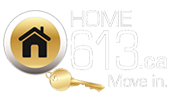LEED Construction
There are many new buildings using the LEED construction certification system, which certifies the residence is more efficient, uses more locally sourced materials and has a much smaller ecological foot print. Some of the basics on the LEED system are listed below. If you are looking for a deeper understanding or more comprehensive picture of what goes into a LEED design building, please sign up to receive one of our free helpful Guides.
In LEED construction for condos, there are 100 possible base points distributed across five major credit categories: Sustainable Sites, Water Efficiency, Energy and Atmosphere, Materials and Resources, Indoor Environmental Quality, plus an additional 6 points for Innovation in Design and an additional 4 points for Regional Priority. Buildings can qualify for four levels of certification:
- Certified: 40–49 points
- Silver: 50–59 points
- Gold: 60–79 points
- Platinum: 80 points and above
The LEED for Homes rating system is different from LEED v3, with different point categories and thresholds that reward efficient residential design.
Process
LEED construction certification is obtained after submitting an application documenting compliance with the requirements of the rating system as well as paying registration and certification fees. In order to establish a building’s point awards in each credit category, buildings applying for certification are compared with a theoretical baseline building defined by a LEED methodology or the more stringent of either ASHRAE/ANSI/EISNA codes or local codes.
Certification is granted solely by the Canada Green Building Council (CaGBC), which is responsible for the third party verification of project compliance with LEED construction requirements.
To find out more: Sign up to receive our free and helpful Ottawa Condo Guides.

